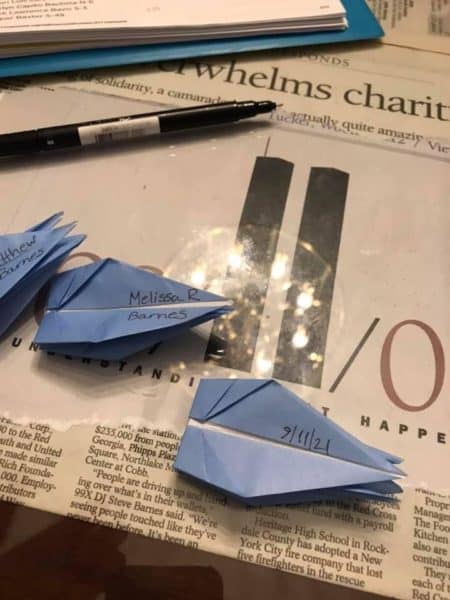The Art of Paper Engineering

The Sunday Paper #380
September 12, 2021
Ooh, la la! Mekeka Designs has curated a line of pillows and meditation cushions that are made exclusively with bark cloth (a paper-like material) from Uganda, plaited palm and loom woven textiles. All of their barkcloth is sourced from the members of the Bukomansimbi Organic Tree Farmers Association (BOFTA), led by 9th generation barkcloth expert Paul Bukenya. Watch the video at the link to find out more about how bark cloth is made.

Detail of the bark cloth production process. The soaked bark is beaten for several hours with nsammo.
———————————————————————————————–––––––
Julie Wilkinson and Joyanne Horscroft of Makerie Studio are a duo of creatives who are exploring the imaginative possibilities of how paper can be cut, assembled, and delicately arranged into delightful artworks inspired by nature. One of their first big joint efforts together was making a paper sculpture of this peacock, inspired by a finely bound volume of Persian poems known as The Great Omar. The book was lost in the ill-fated sinking of the Titanic in 1912, but the peacock sculpture was purchased by Shepherds Bookbinders in London, where it lives now.
——————————————————————————————–––––––
Daniele Roberts, a Gwinnett County Public Schools bus driver, and her husband and two daughters have folded 2,977 origami paper cranes which will be used to create a stunning public art memorial. The installation is taking place as I type this – these blue paper cranes will be suspended from a large oak tree at Lilburn City Park – I’m guessing you’ll be able to find online images of the display when you are reading this. Each paper crane has one victim’s name handwritten on it, along with the 20th anniversary date of 9/11/21.
 ———————————————————————————————–––––––
———————————————————————————————–––––––
I attended a fantastic talk yesterday by Kelli Anderson, who thinks about paper in really interesting ways. This was hosted by the Stamelos Gallery Center at the University of Michigan, Dearborn, which is currently hosting an exhibition that features some of Anderson’s work, along with that of other paper engineers. The talk should be available on the website soon, but in the meantime, you’ll find lots of interesting info about paper engineering there.
———————————————————————————————–––––––
Paper Tidbits:
- The Movable Book Society is meeting in Denver at the end of the month (I’m going). You can attend virtually.
- Have you listened to my interview with June Tyler on Paper Talk?
- My Flexible Book Structures online class begins next Monday, 9/20. It isn’t unusual to sign up at the last minute! In fact, I have a few supply kits left and if you register today, it will most likely arrive before class begins.
- A few years back, I did a series of “Best Of” books about paper. Find the series here.
———————————————————————————————–––––––
In the Studio:
On the twentieth anniversary of 9/11, there’s a lot to reflect on. I did not listen, watch or read much news back in 2001, because I was busy with a 2-year old and 2-week old. My mother and father had come to visit and flew home to Texas on September 10th, running into friends of ours from Brooklyn who were on the the first leg of their flight and had visited us in Portland the day before in Portland. So many of us have close call stories like this, and many others lives were changed forever on that day.
This is a haunting image that is reproduced within the pages of Nicholas Basbanes book, On Paper. As an investigative journalist, Basbanes traveled the world (literally) to uncover all sorts of intriguing facts and stories about paper. He tells us how paper has been civilization’s constant companion, preserving our history and giving record to our very finest literary, cultural, and scientific accomplishments. Without paper, modern hygienic practice would be unimaginable; as currency, people will do almost anything to possess it; and, as a tool of expression, it is inextricable from human culture.
The book ends with a touching story about a piece of paper with a handwritten note on it that was found on 9/11, took 10 years to get processed, and due to a blood stain, was identifiable. The story that unfolded has a tragic ending, as so many did that day, but the discovery of the note gave the family of Randy Scott a bit of closure. Can you imagine? For 10 years they hoped he died instantly when a plane struck the tower he was working in, but this piece of paper confirmed for them, that he died trying to save the people he was with. The fragment is at the National September 11 Memorial & Museum. I hope you’ll read and enjoy Basbanes’ book, but in the meantime, here’s the story that broke on the 10th Anniversary of this day.
———————————————————————————————––––––
| Featured this week in my Studio shop:
Now registering: Flexible Book Structures Online Class, The Paper Year (hold your spot), Curated Paper Collection #3, and The Papermaker’s Companion. |
|
 |
 |
 |
 |
———————————————————————————————––––––
If you read this blog regularly, would you consider making a donation to support the research, writing, design and delivery of The Sunday Paper? Or, perhaps you’re interested in promoting your business in The Sunday Paper.
Thanks to everyone who has already pledged your support!
———————————————————————————————––––––
SHARE THIS blog post with your paper-loving friends!
I occasionally have affiliate links in my blog posts – links to products in which I will receive a small commission if you make a purchase. Thanks for your support!

